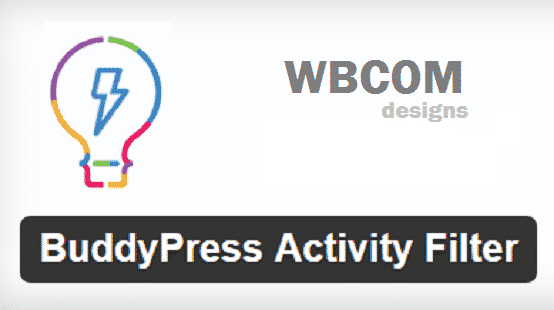As schools continue to recover from the pandemic, it is no secret that new education models are now coming to the fore. While some institutions have adopted online learning completely, others still try to combine elements of traditional in-school tuition.
But blended learning did not become a thing during the pandemic. Some academic institutions have used this learning format, albeit to a limited extent. Besides, students often combine their tuition with assistance from a reliable essay writing service or an online learning portal.
So, this article uncovers the definition and history of blended learning. You will also discover the benefits of adopting this academic tuition model.
What Is Blended Learning?
Blended learning is an education format that combines elements of in-person tuition and online learning.
This model allows students to choose schedules and timetables suitable to them. For instance, international students can continue their school work despite not being present in school. And when they return to school, they can slide into the program seamlessly without scaling through mountains of backlogged projects.
The faculty also uses blended learning to bridge the technology gap and broaden the student’s horizons. By introducing advanced tools into the curriculum, teachers can provide better quality teaching to their students.
History of Blended Learning
Now that we have addressed the definition of blended learning, let’s dive into the history of this learning model.
The first instance of blended learning dates back to the 1800s when Sir Isaac Pitman would hold shorthand correspondence with his students. He would send texts to his students as postcards and receive them back, which he then graded.
This learning method was not popularized due to its slow pace. But everything changed with the computer revolution in the 1960s and 1970s.
In 1963, the University of Illinois released PLATO — a mainframe system that collected character inputs from a terminal and delivered it to a user. Students could print reading materials from the system. This launched the new era of blended learning.
As technology progressed during the 1980s and 1990s, students and faculty staff also figured out new ways to fine-tune the learning process. CD-ROMs, cassette recorders, and diskettes became essential learning tools to record video and audio.
However, the final turning point in the history of blended learning came in 1998 after the internet-enabled PCs became household features. Students could now download and share materials via the internet.
Since then, technology has rapidly progressed as institutions now adopt various virtual labs, exam portals, and learning management systems (LMS).
Common Blended Learning Models
Today, blended learning has metamorphosed into different branches. Schools now customize their learning models to suit the students. Here are the common blended learning models available in academia at the moment.
- Rotation model — allows students to rotate between online and in-class learning based on a fixed timetable.
- Flex model — focuses on online learning under the guidance of instructors. Students spend most of their time in digital labs.
- À La Carte model — offers students to take additional online courses to supplement their regular in-class curriculum.
- Online lab model — prioritizes online lab work in which students have to study the academic material online but travel only to take exams.
5 Advantages of Blended Learning

Blended learning combines the best qualities of both online and classroom learning. Let’s look at the benefits of this learning format.
Flexible Learning Format
Under the blended learning model, students are not stuck with only boring lessons in the classroom. Instead, they get the opportunity to explore other mediums to acquire knowledge.
As a result of this flexibility, students can adjust their schedules to meet their teachers’ demands. For instance, instead of taking sick leave and missing the entire class, you can log in to the school’s portal and catch up with the material.
Bridges the Knowledge Gap
Blended learning allows students to level up with their peers, regardless of possible learning disabilities.
Students with physical disabilities no longer need to commute to class every day. They can easily clock in with their mates, thus saving them unnecessary hassle while providing them with the same quality of education as others.
Essentially, this equitable distribution of access to learning material levels the playing field for disenfranchised and non-disabled students alike.
Improves Hard Skills
Constant exposure to advanced technology helps students hone their hard skills. From handling digital files to using advanced VR solutions, students can extend their learning experience to the digital world and acquire valuable hard skills.
Besides, teachers and other faculty staff can also improve the learning material by harnessing the power of advanced software programs.
Reduces the Cost of Tuition
Since traditional classes require buildings and other physical tools, the cost of maintenance accrues to the tuition. However, blended learning reduces the cost of education in the following ways:
- Eliminates the cost of accommodation;
- Eliminates the need for daily commutes;
- Reduces the cost of infrastructure maintenance;
- Reduces the institution’s paper trail.
Digital tools often come with cloud-based storage, which is cheaper than physical storage. Besides, schools can subscribe to LMS platforms and give students free access.
Boosts Academic Engagement
Blended learning keeps students in the loop even when they are away from campus. Similarly, parents can also monitor their students’ academic engagement and assist teachers in holding their kids accountable.
Ultimately, this increased engagement level trickles down to classroom participation and grades.
Conclusion
Blended learning represents the future of academics as life continues to shift online. This learning format provides flexible platforms for students to stay in touch with their peers. Besides, blended learning improves academic engagement by bringing parents aboard. And in due time, students will gather excellent hard skills that will translate into the workplace.
flexible platforms for students to stay in touch with their peers. Besides, blended learning improves academic engagement by bringing parents aboard. And in due time, students will gather excellent hard skills that will translate into the workplace.
Interesting Reads:
Top reasons Why LMS is Necessary for Successful Business






